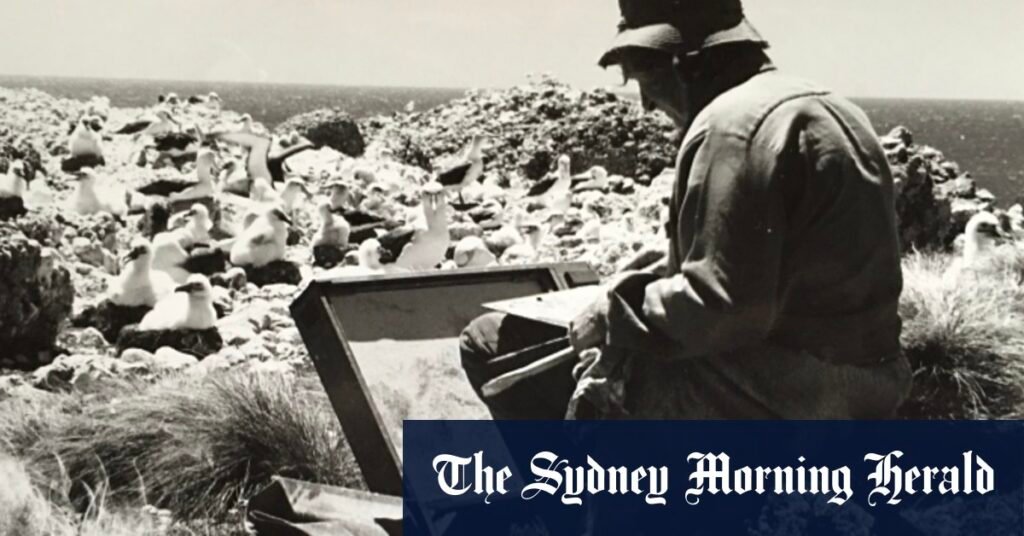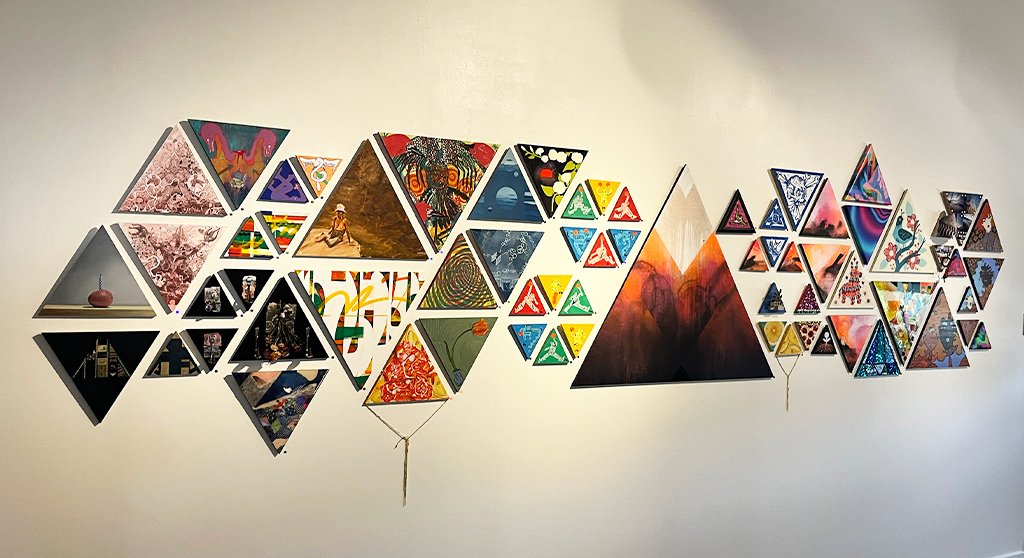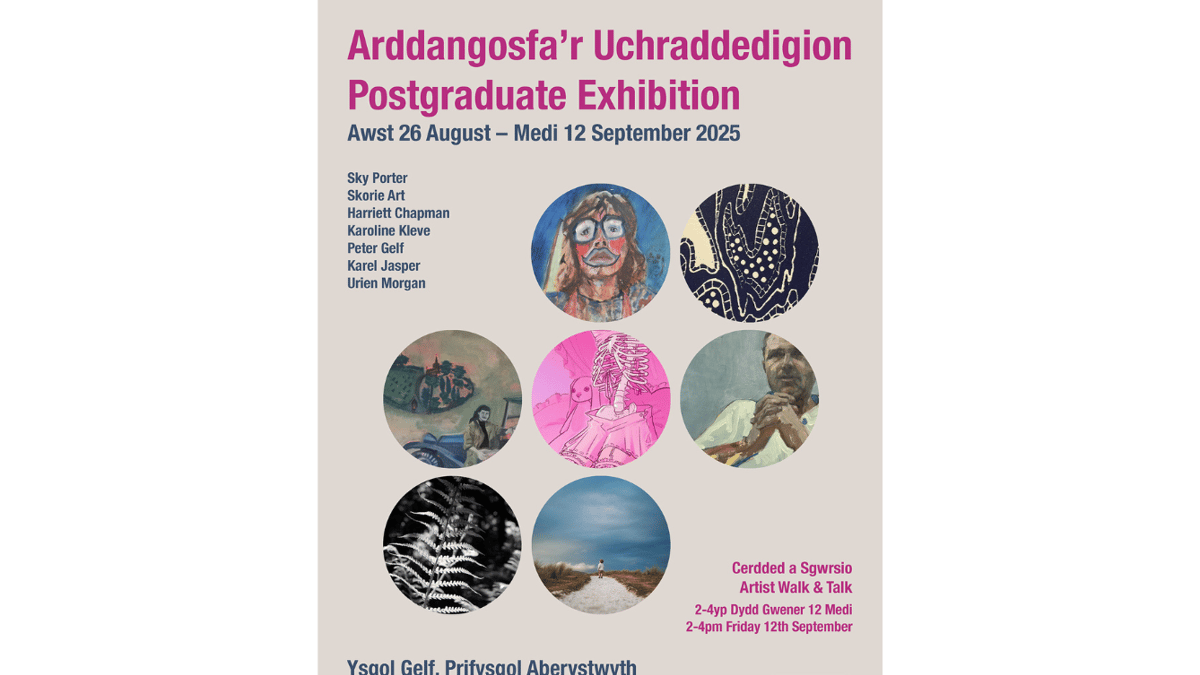The Davis house in Bellerive, with a clear view of the Derwent, is on a big block with an extensive garden from which George and Mary sought self-sufficiency. They kept bees and chickens and harvested honey, vegetables and walnuts. Their house also became a magnet for gatherings of family and friends, most of whom were involved in art or science. Conservation and concern for the environment played a central role in both of their lives and even led to their arrest in 1982 for opposing the government’s intention to dam the Franklin River.
George’s landscapes of islands off the coast of Tasmania are much admired – Albatross, Fisher and Goose, and as far south as Macquarie Island – especially following an exhibition of them at the Tasmanian Museum and Art Gallery (TMAG) in Hobart in 1978. They reveal a natural colourist able to create lively and memorable vibrations of high-key colour.
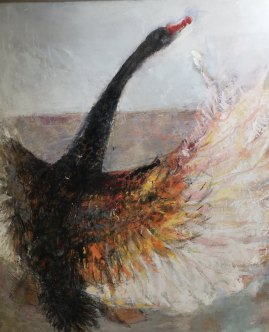
A black swan by George Davis.
They also introduced the art-loving public to hitherto unknown bird colonies, which continued to stimulate and inspire him for the rest of his life. The TMAG staged an exhibition of George’s portraits in 1988, and in 2014, a book was privately published entirely devoted to his drawings, accompanied by a substantial survey of his paintings and drawings at the gallery.
It was his observation of the natural world, his love of birds, animals and plant life, of his fellow men and women, meticulously and passionately translated into drawings and paintings of rare intensity, understanding and power, that established his authority as a major artist. He could delineate the flight of an albatross with rare acuity, or the inner structure of a flower, a Haflinger truck, the tiredness of his wife Mary at the end of a trying day, or of daughter Essie stretched out on the floor and gesticulating in lively conversation.
His enthusiasm for scientific research and individual scientists concerned with the environment was boundless. There were many from within Tasmania and mainland Australia, as well as specialists around the world with whom he often corresponded, sharing in their discoveries and contributing his own. Some of the best-known were Vincent and Dom Serventy, Phillip Law, Max Moulds and Nigel Brothers. His interest extended to moths, beetles, cicadas, bees, shells, fish and birds, cacti, flowers and much more, expanding his view of the world and providing subject matter for his art. His drawings of skeletons – whales, dinosaurs, penguins, koalas – are second to none and invoke Leonardo da Vinci for me.
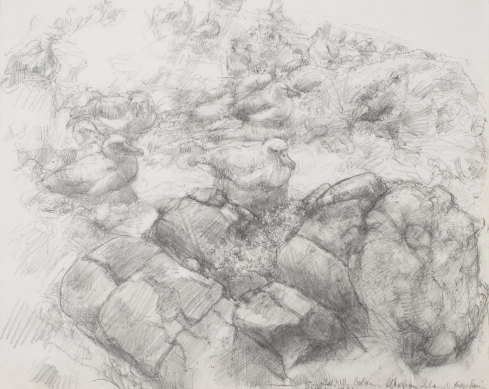
Seabird drawing by George Davis.
Passion, the force of nature and an acute awareness of environmental abuse are to be found in all of his work. One of his most expressive drawings is of the remains of an oystercatcher suffocated in oil slick left by a ship deliberately scuppered off Flinders Island by BHP in 1995. The ensuing pollution that caused its death, as well as many other creatures like it, is chilling – an indictment of corporate indifference and greed. George inscribed the drawing in uncompromising irony: “BHP the big Australian”.
I was lucky enough to have been painted by him several times, so I was able to study his approach as a portraitist at close hand. He was undoubtedly a master of the genre. Those of well-known Tasmanians – former premier Doug Lowe, poet Vivian Smith and pioneer botanist Winifred Curtis – are among his most accomplished. And then there are his portraits of the classics of music (including Beethoven, Mozart and Schubert) installed on the ceiling of Hobart’s Theatre Royal in 1985, commissioned following an awful fire that ravaged the building and destroyed the rather ordinary originals. George’s portraits are as compelling as if painted from life.
In the eight years I spent in Tasmania as curator of art at the TMAG in the 1980s, no artist occupied me more than George. His interests were universal. The intensity of his focus, his unrivalled draughtsmanship, his interest in scientific research, and his love of the human form were utterly captivating. It is unfortunate that he remains largely unknown beyond Tasmania. The island state nurtured and contained him, and he felt little impulse to leave.
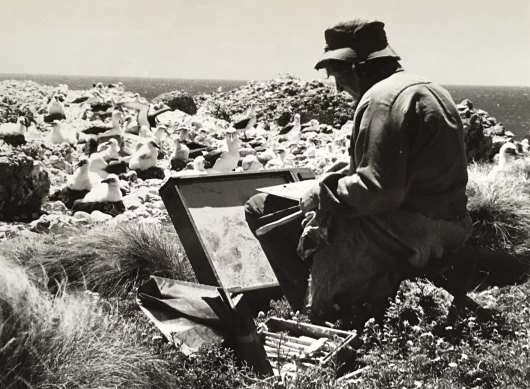
George Davis, a passion for nature.
Nevertheless, his art is revelatory and extraordinary and will continue to attract anyone genuinely interested in art and nature who ventures south of mainland Australia in search of unexpected treasure.
Rest in peace, dear friend.

